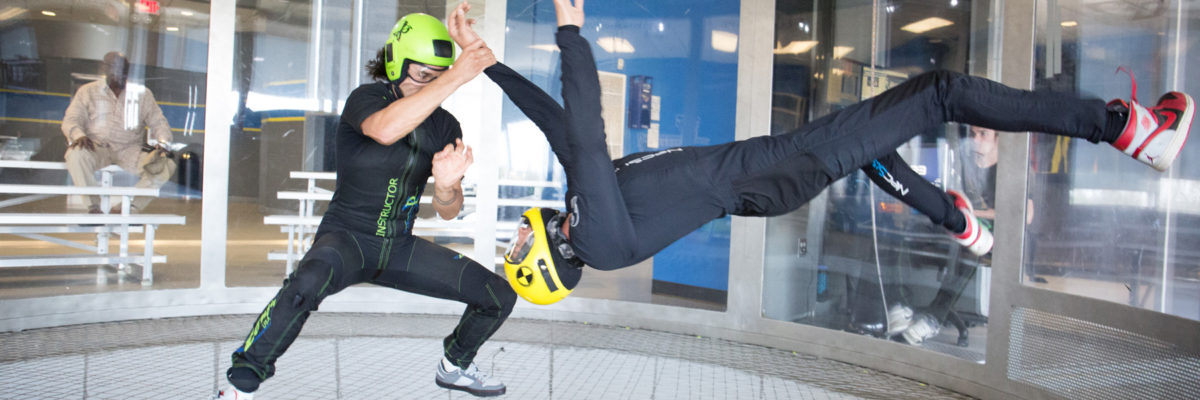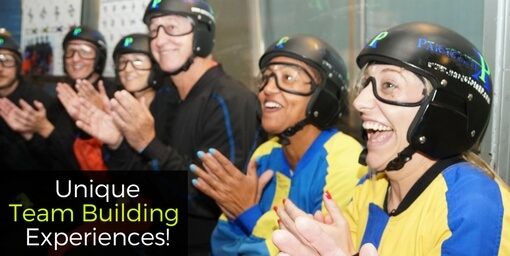
Can Indoor Skydiving Help Me Learn Backflying?
Monday, October 19, 2020
- Team XP
- 10/19/20
- 0
- Indoor Skydiving
Almost certainly, your first serious conversation about training bodyflight skills in a wind tunnel will involve some talk about flying on your back. But why is backflying so important, what is the best approach to learning it, and how can Paraclete XP help you accomplish that?
Safety
Once you have practiced flying on your belly enough and can get around with reasonable competence, the door is open to move on with newer and fancier skills. There is much more to learn about belly flying if you so wish, as wind tunnel users attempt to get as fast as possible and have serious competitions to decide who is the best. But, more likely, what you really want to do is zoom about at any and every angle you see experienced skydivers and tunnel flyers do.
Freefly training uses many different wind speeds, sometimes slower than what you might be used to on your belly and sometimes faster. This is why backflying is important and will be the first thing you are required to understand before moving on. In the back fly position, you are able to fly safely and in control at every wind speed required to train all the other styles and orientations. Backflying is a recovery and safety position, and training for other types of flying include understanding how to get to and from your back.
Bodyflight Coaching
There is no substitute for quality coaching. Reading and watching videos, and even practicing on your own all have some value. But it all pales in comparison with direct feedback from a suitably qualified coach. Experienced instructors of bodyflight have developed the ability to appraise people’s abilities, strengths and weaknesses in literal seconds while they are flying. Receiving coaching means spending money on top of something that already costs a lot of money, but it’s better value than what it might cost to figure things out yourself.
Backflying in Skydiving
True backflying is not done much in the sky. Very basically, the open environment of the sky means that matching speeds to one another is more important than to that of wind speeds within the closed space of a wind tunnel. Understanding how to use your back in the sky is still very important – training just comes in a different order mixed up with other things.
Everything is connected, though, and good backflying skills that you have practiced in the tunnel transition very well to when you need them in the sky. The lessons you learn about how to hold positions and move your body in the wind, and also the awareness you develop about where you are and where you are going all begin in earnest with backflying. For the first time, you will be both upside-down and trying to remain there, and programming your brain and your body to understand this now will pay off later.
Getting It Right
Bodyflight can feel super technical and somewhat confusing – particularly at the beginning. One thing matters above all else: less is more. Good flying skills are all about using the smallest amount of movement and energy to achieve the desired result. If you perform a movement that is more than necessary, then you have to do another movement to stop the extra motion. Two actions for one result is way too much. Your first goal for any position is neutral – where you apply the things you know about movement to stay still and thus demonstrate the required precision.
People get into freeflying to zoom, but, in truth, good skills are measured by your ability to go slow and manage speed. Speed comes later, and with the correct training you will indeed get there. Much of understanding how it all works can be learned via proper backfly – to the point where more of the supposedly advanced things will be much, much easier. You will hear a lot about how ‘slow is fast’ – this is not a secret and you will be told it over and over from the very start of learning to fly both indoors and out.
Interesting in learning more about how to backfly? Contact us today and book your spot in Paraclete XP wind tunnel, which is the largest in the country.
Copyright © 2025, Paraclete XP Indoor Skydiving, All Rights Reserved.
DropZone Web Design & Marketing by Beyond Marketing, LLC
